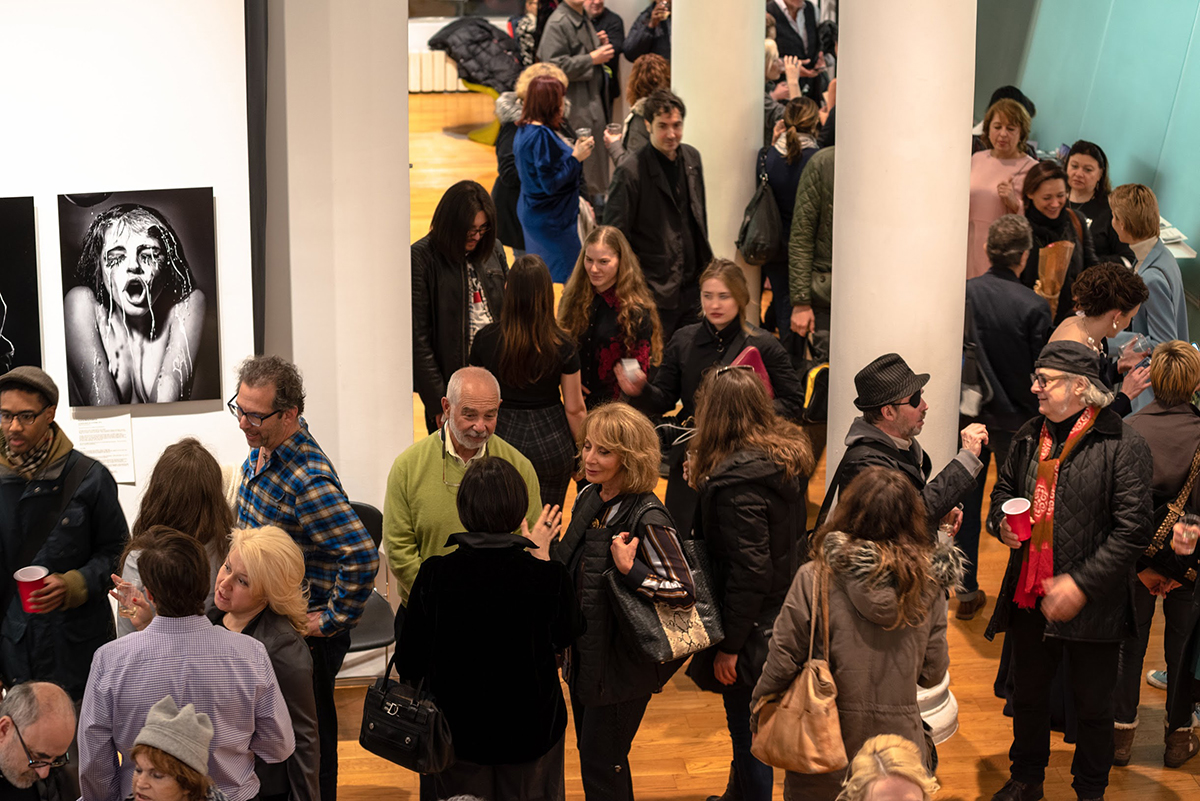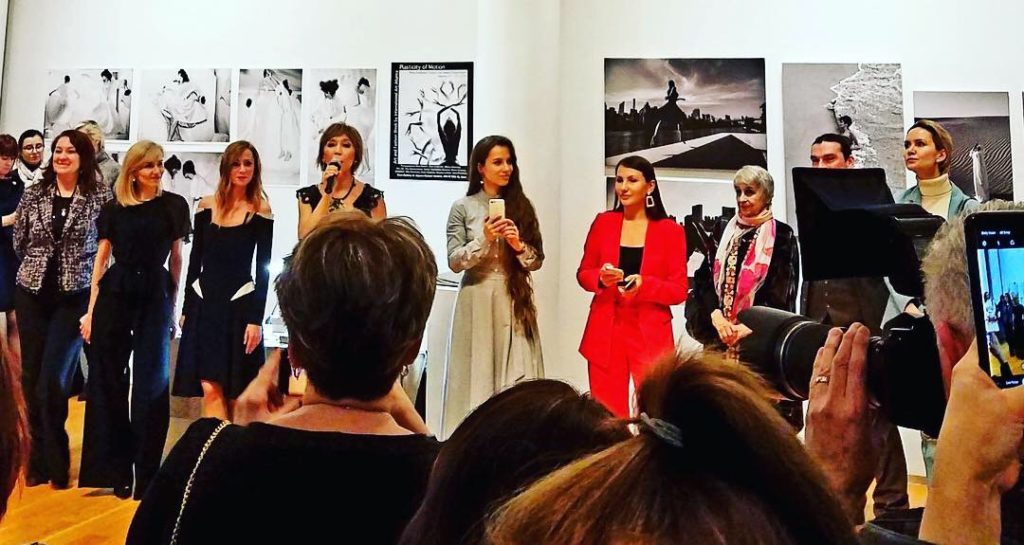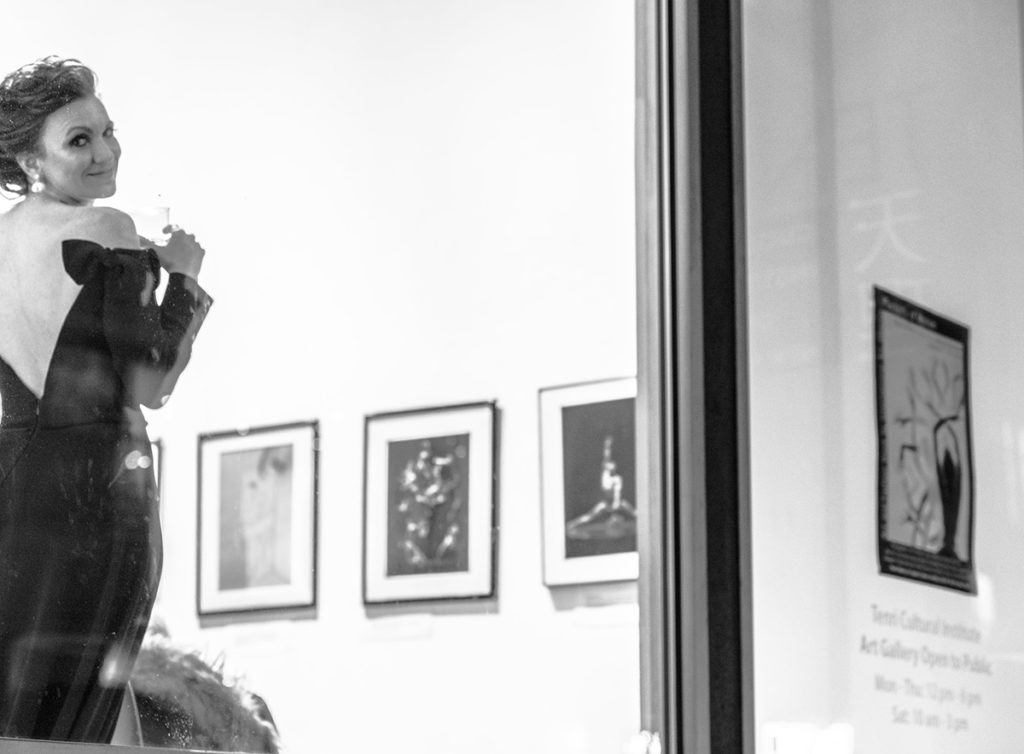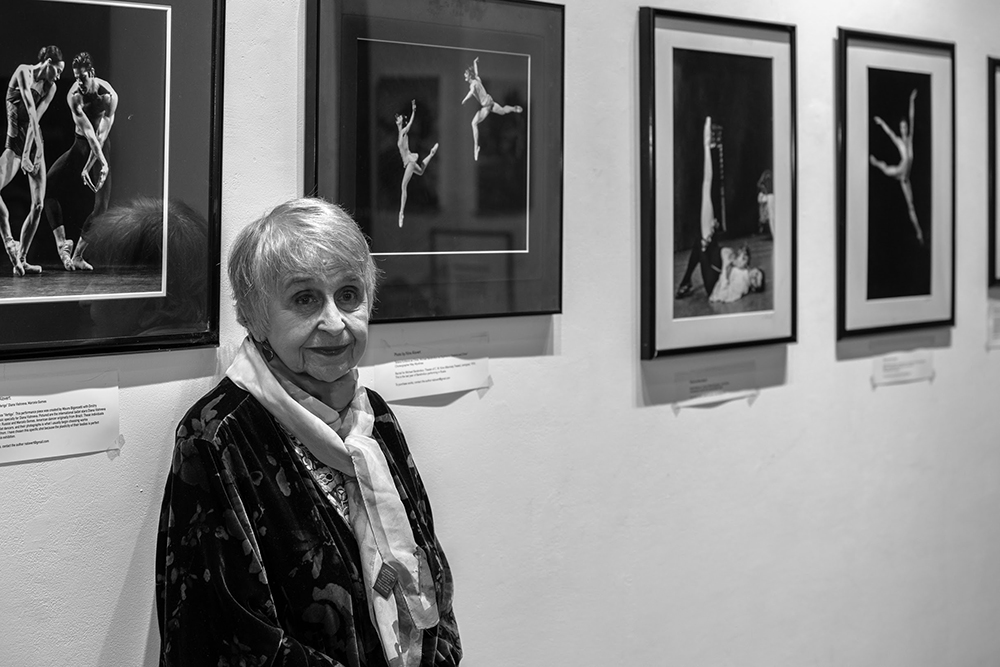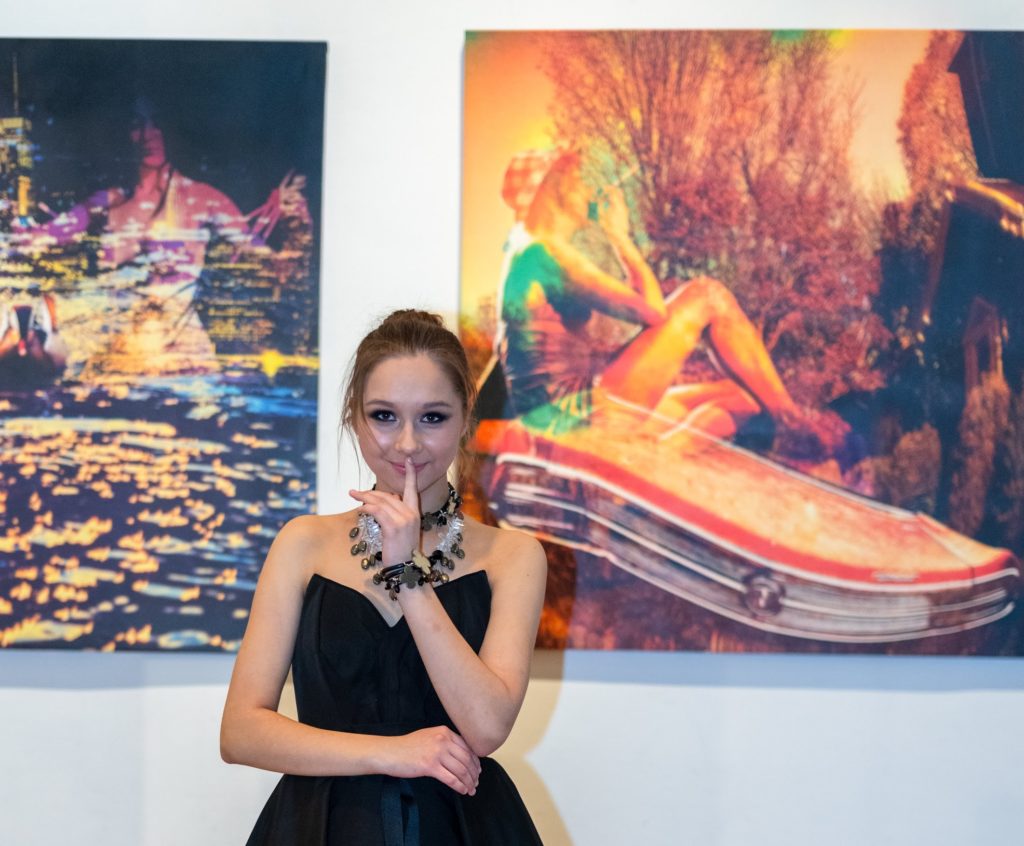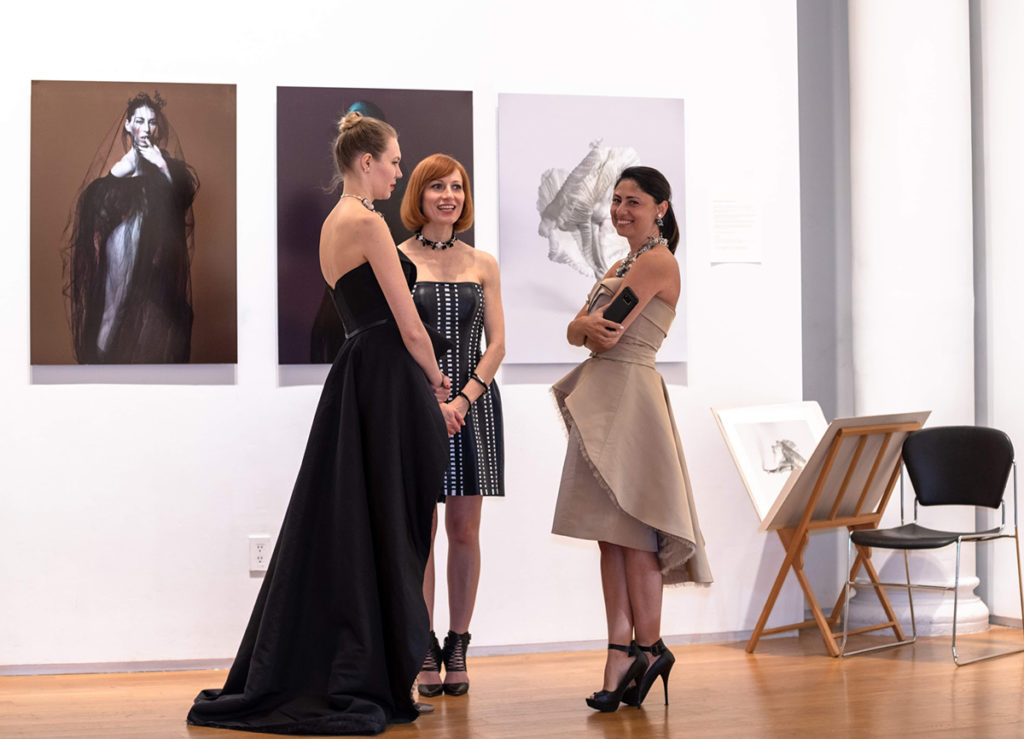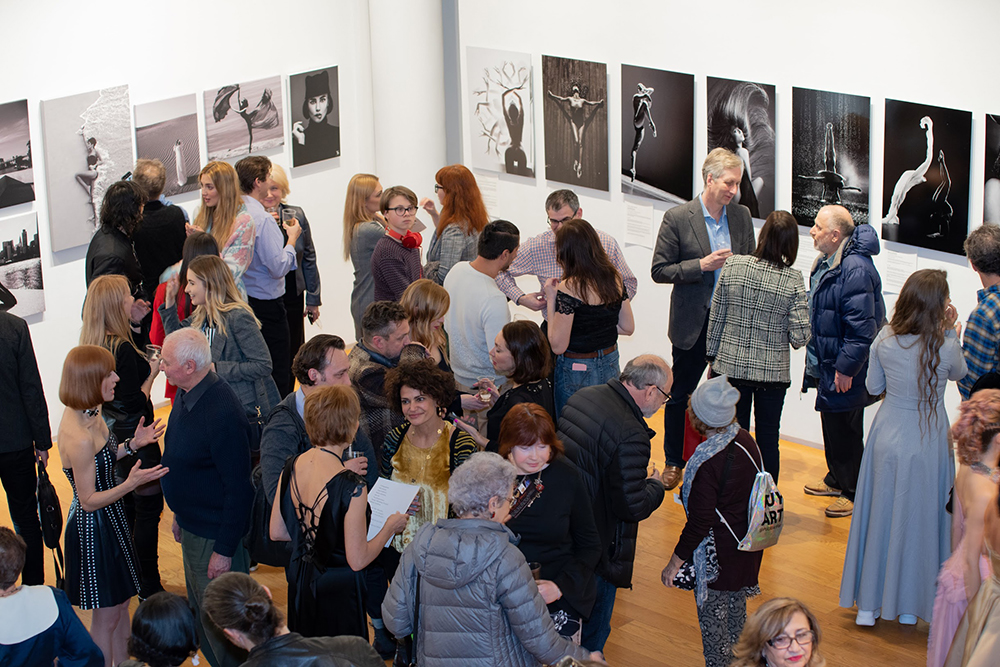On February 7, 2019 the doors of the exhibition “Plasticity of Motion” opened in the spacious gallery of the “Tenri” Gallery (Japan Cultural Institute), and numerous viewers filled the exhibition hall. Their expectations were more than justified: the exhibition turned out to be impressive, well-organized and rich with surprises. Opening reception was a real celebration, although its business component did not remain forgotten. As regulars noted, this exhibition has become one of the best in recent years.
The peculiarity of “Plasticity of Motion” was the fact that only photographs were presented, abandoning the idea of combining the exposition with paintings. But, following the tradition, the Art Alliance also showed collections of fashion designers and jewelers.
The bright festive opening gathered several hundred guests. Among them, american collectors and photo-art fans, secular ladies interested in original pearl jewelry, as well as an artistic audience, professors and students of the nearby New School and NWY.
Participants and guests communicated with each other easily. The commonality of interests and creative views, mutual understanding and enthusiasm for art created a favorable atmosphere, which made it possible to establish promising business and personal contacts. It was pleasant that during the exhibition sales took place. It was also important that several photographers who flew to New York from Ukraine received offers for joint projects in US, and jewelers found new customers.
Written especially for the opening, the poem by Natalia Newman, was read at the reception by the author, and was a great success. The enormous efforts invested in the creation of this celebration proved to be justified.
The organizer of the exhibition Tatiana Borodina, the president of the Art Alliance and the editor-in-chief of Elegant New York said: “Plasticity of Motion” turned out to be special not only because I belong to a glorious tribe of photographers, but also by the fact that this time we decided not to combine the works of artists and photographers in one exhibition. While preparing the exhibition, I firmly decided that each of the participants would receive a whole wall, in order to present not one or two works, but a series, giving the opportunity to express themselves and their art. I conceived the event not like a group exhibition, the goal was to create several personal exhibitions in a single concept under one roof. The selection of works for the exhibition was very thorough and demanding. We were interested in the work to be not only professional, but also conceptual and creative.
The theme of the exhibition, at first glance, was not complicated – plastic movement. The organizers set their goal to show the diversity of views and approaches of the participants to this topic.
Certainly the dance and its plasticity – this is what I want to talk about in the context of the chosen topic. Therefore, this exhibition could not be without the participation of one of the most ambitious photographers of our time, shooting dance for more than 50 years. Nina Alovert, ballet and theater photographer. Her work at the exhibition is a tribute to Alovert’s talent and timeless ballet classics.
The work of 3 Ukrainian photographers, a new generation of Darya Tishchenko-Zhuravel, Maria Andreychuk and Tina Sokolovsky, became a special discovery for me,” said Tatiana Borodina. “These photographers are completely different in style and character, but they are surprisingly similar in their dedication and uncompromising, freedom and daring. I admit they delighted me, and I wanted that people who came to our exhibition admire their work.”
The attention of the public attracted the work of Zoe Anderson, a photographer from Alaska, stylistically different from all others. Zoya does not shoot professional models, she prefers to do her work in old fashion stile, romantically slightly blurred, emotional, unpredictable and a bit surreal.
The work of the American photographer Alex TG is based on photos that after taking go a long way. His works are created from several images, usually combining complex forms of panoramas of the city with the plot of street scenes and studio shots.This author’s style creates a powerful emotional intensity based on the contrast and relationship of the urban landscape beauty and the perfection of the human body, which allows you to touch on the deep metaphysics of modern society.
The special charm of the exhibition opening was fashion show of Olga Banartseva (evening dresses) and the new collections of jewelry from Kira Koktysh and Oksana Lerman. The femininity and sophistication of all the components of evening gowns exceptionally well fit into the theme of the exhibition. The photo exhibition and the fashion show looked like a single thing.
Many guests left the exhibition with shopping for Valentine’s Day. The organizers provided that the closing falls just on the Valentine’s eve, offered generous discounts. Everyone was satisfied.
One day, a concert of jazz pianist Alex Prirodniy, a laureate of jazz festivals, took place in the exhibition hall. For the guests of the concert, the exhibition “Plasticity of Motion” was a pleasant surprise, complementing the excellent jazz program.
During the exhibition, a film was shot for the New York television channel MNN. Alex AG, the host of tv program discussed with the participants of the exhibition issues related to modern art photography. This program will be shown as part of the “Single Shot Show” program. The producer of the program, Mark Ungar, is a veteran of the MNN channel, has always worked with topics relevant to society.
“I am happy with how everything went,” Tatiana Borodina said at the closing of the exhibition. – The list of participants was very strong. I am grateful to everyone for their well-coordinated work and friendly interaction. The exhibition was visited by a lot of guests, and I am grateful for their warm reviews. It is important that with the public, the exhibition provoked just the kind of reaction that we had hoped for – it means Art Alliance is on the right track, and should follow the concept we have found.
Vitaliy Orlov

